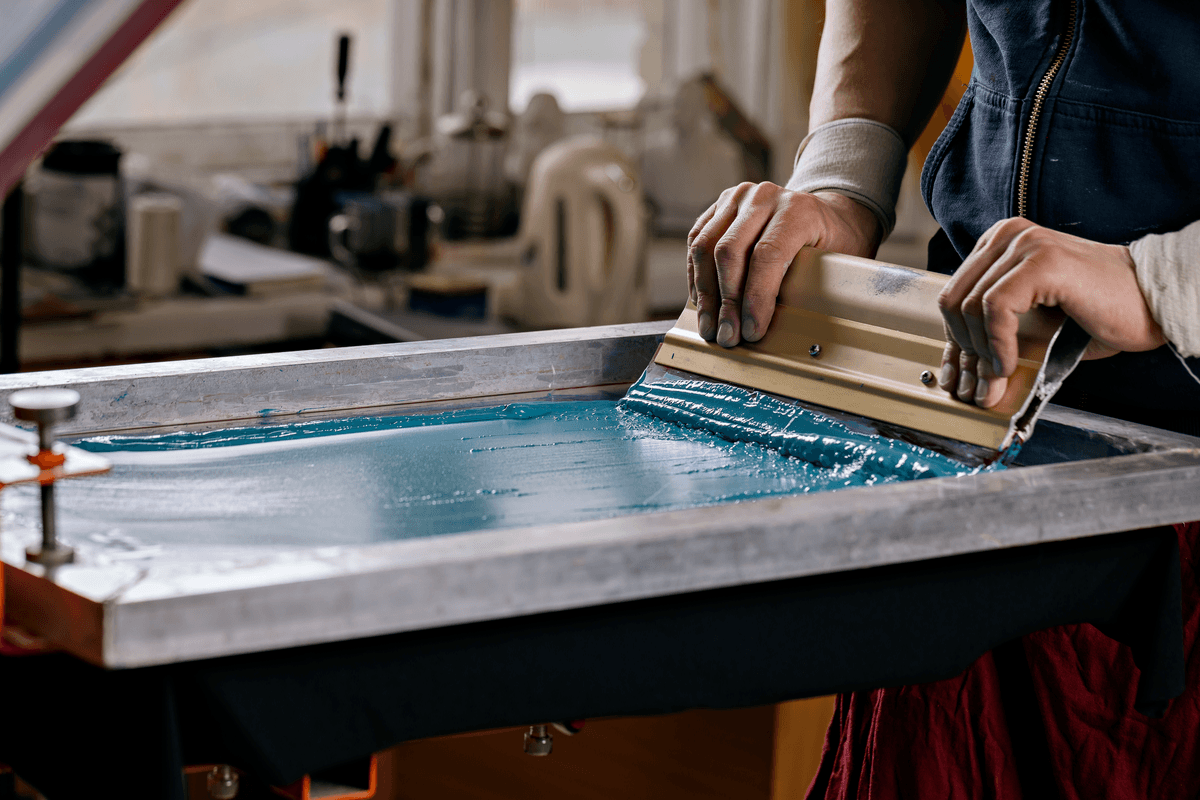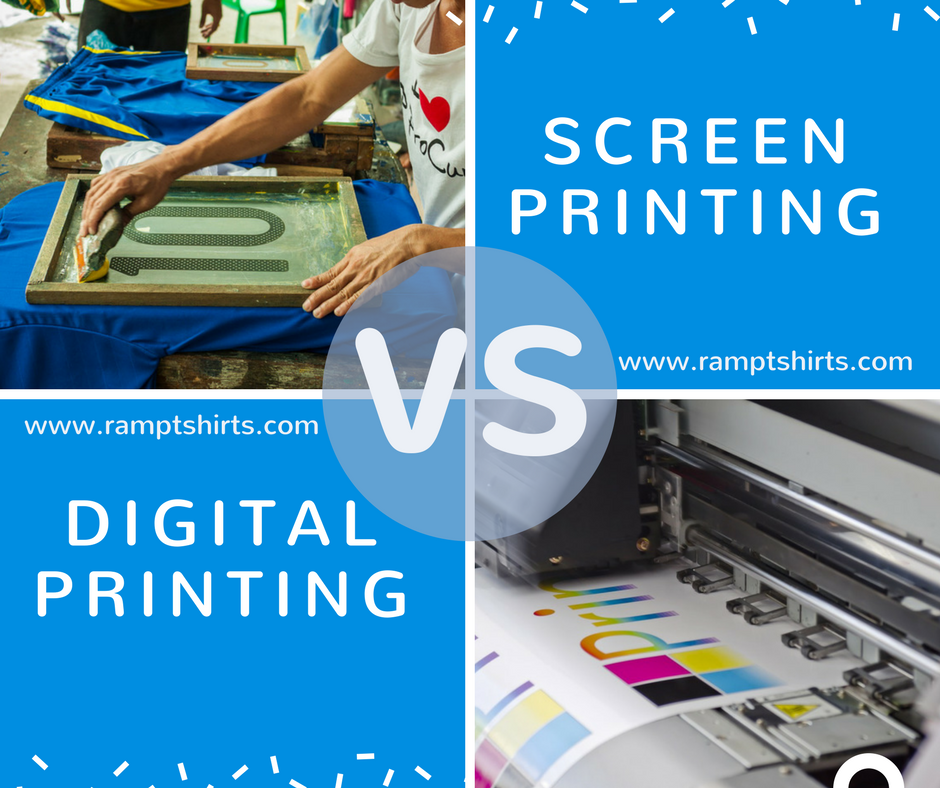The Facts About Tx Tees Uncovered
The Facts About Tx Tees Uncovered
Blog Article
Tx Tees Fundamentals Explained
Table of ContentsThe 6-Second Trick For Tx TeesTx Tees Things To Know Before You BuySome Known Incorrect Statements About Tx Tees The 6-Second Trick For Tx TeesThe 5-Minute Rule for Tx TeesNot known Factual Statements About Tx Tees Examine This Report about Tx Tees
Include up other costs, like the number of utilities it takes to run the store and the cost of ink and solution per layout. Take the print below.The solution must just be a couple of cents since you 'd only require to coat one display for this task. Exactly how much should you bill per shirt to make a revenue? Normally, printers attempt to make up to 45% profit on a print task. Right here's a table to aid you determine that: overall price per thing percent of desired earnings as a decimal (example:.25 or.45) profit made per product per task Now allowed's speak about the profitability of DTF.

With DTF, you can print a handful of t-shirts, or just one. Both screen printing and DTF have their niches in the globe.
The 7-Second Trick For Tx Tees
The ideal method to know? Ask about and see what print shops like your own are doing. custom screen printing. Try both out and see which you like far better
When you're choosing what kind of printing technique to make use of for printing your artwork styles on your garments, it is necessary that you know the distinctions in between these 2 strategies so you can maximize results while decreasing costs. Screen printing is the most typically made use of strategy for publishing styles on fabrics.
DTG printing is also referred to as area or straight to garment printing since it publishes just what is required rather than making a display as screen printers do. https://www.callupcontact.com/b/businessprofile/TX_Tees/8988532. Display printing works by screen filler squeegee screen printing ink display mesh screen, after that transferring the photo to garment making use of heat and/or stress
The DTG printer uses unique dye-sublimation inks that are used right into a pre-designed image by an electronic printing system. The inks end up being component of the material, permitting dynamic colors and extraordinary detail. It's additionally referred to as spot or direct to garment printing because it publishes just what is needed rather of making a display as screen printers do.
Get This Report about Tx Tees
First, it's much faster - you can publish a fullcolor image in mins, as opposed to hours for display printing. Second, there's no set up time or prices entailed - you can publish any design you like, without having to create a screen. Third, there's no waste - since screen printers screen print one design each time, they need to evaluate each color individually.
The paper is very costly and can only be utilized when. Once it's printed on, it needs to be disposed of. - The preliminary purchase price is reduced than the upfront investment of DTG printers- You can publish multi-color layouts one display at once rather of needing to publish each shade individually like DTG printing.

The Definitive Guide to Tx Tees
Nonetheless, instead of utilizing display mesh as screen printers do, color sublimation printers use laser modern technology to move your pictures onto garments or paper. A heat procedure transfers the dye from its solid-state directly right into the gas phase which subsequently integrates it onto fabric substrates when they are swiftly heated up to high temperature levels under high stress.
Sublimation printing is eco-friendly. It uses much less water than screenprinting, and since it does not entail the use of dangerous solvents, it's safe for all sorts of clothing. The dye sublimation inks are likewise unsmelling when healed, unlike screen printers that utilize unsafe chemicals throughout the screen printing process that leave behind an undesirable smell.
They additionally save money on costly equipment like exposure devices because dye sublimation printers don't require a UV exposure unit or a flash cure oven that is usually utilized in screen printing (custom cap printing). What is straight to garment printing (DTG Printing)? DTG printing is an electronic screenprinting procedure that prints directly onto material using specialized inkjet printers
Excitement About Tx Tees
DTG printing supplies lots of advantages over standard screenprinting, including the capacity to publish photographic high quality images, greater color vibrancy, and the capacity to print designs on darker materials. DTG printers function by heating up the textile ink until it transforms into a gas. The gas after that penetrates the material, bonding with the fibers to create an irreversible print.

Screen printers simply prepare their display after that begin publishing till they lack item or ink.- There is a large range of seasoned display printers throughout the world, which can be useful for beginners. - It's a slower procedure - display printers typically need to wait for the ink to dry before they can publish the next shade- Display printers need manual work, so there's a higher understanding curve and it takes longer to create a top notch layout- Display printing isn't as precise as DTG printing, so you may obtain some "blood loss" of colors from one component of the picture onto an additional if not done correctly.
Some Known Questions About Tx Tees.
Rather of utilizing display mesh as screen printers do, color sublimation printers utilize laser technology to transfer your photos onto garments or paper. A heat process transfers the color from its solid-state straight right into the gas stage which subsequently merges it onto fabric substrates when they are swiftly heated to high temperatures under high stress.
Sublimation printing is environment-friendly. It makes use of less water than screenprinting, and since it does not include using harmful solvents, it's risk-free for all sorts of clothing. The color sublimation inks are likewise odorless when cured, unlike display printers that use harmful chemicals throughout the display printing procedure that leave behind an unpleasant smell.
They likewise conserve cash on pricey equipment like exposure systems because color sublimation printers do not call for a UV exposure device or a flash cure oven that is commonly used in screen printing. What is direct to garment printing (DTG Printing)? DTG printing is a digital screenprinting process that publishes straight onto material making use of specialized inkjet printers.
Unknown Facts About Tx Tees
DTG printing supplies lots of advantages over standard screenprinting, including the ability to publish photo top quality pictures, higher shade vibrancy, and the ability to publish layouts on darker materials. DTG printers work by warming the fabric ink up until it becomes a gas. The gas then penetrates the fabric, bonding with the fibers to create a permanent print.
Report this page